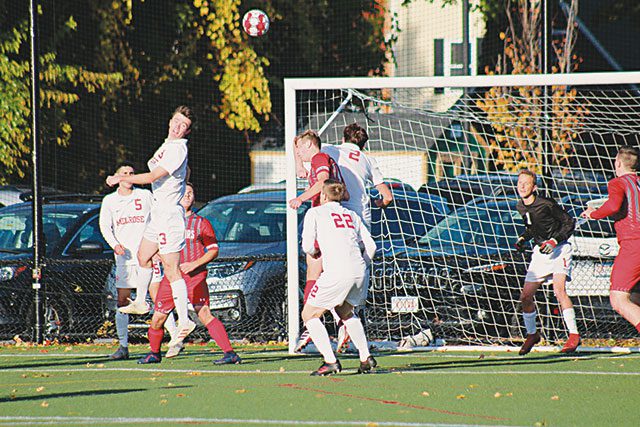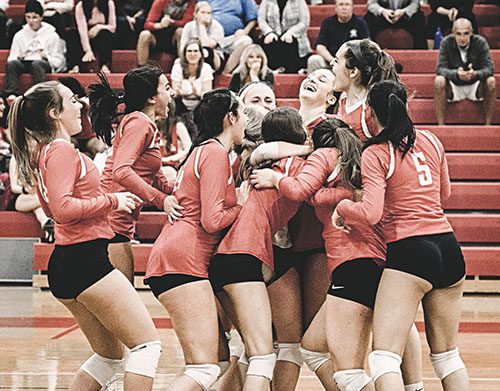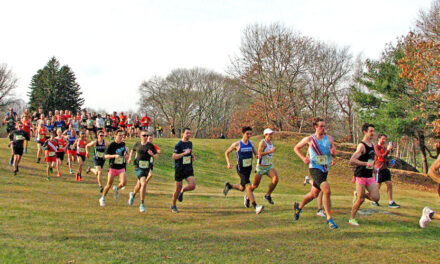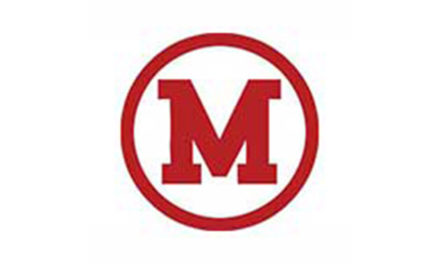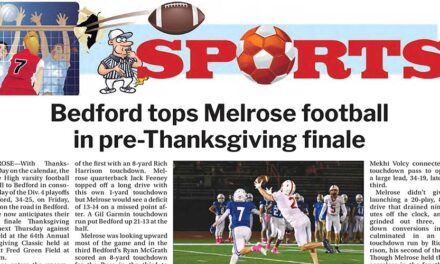Questions abound for 2020-21
Published May 29, 2020
By JENNIFER GENTILE
MELROSE—In an age of total uncertainty, many athletes, coaches, parents and fans are wondering what the Massachusetts high school fall sports season will look like in 2020-21. That’s providing students return to school by then. (Fingers crossed!)
Of course, we don’t know. No one seems to know anything. But recent movements by the Massachusetts Interscholastic Athletic Association (MIAA) and the National Federation of State High School Associations (NFHS) have made the foggy forecast a little clearer. On May 18, the MIAA announced that it has not made any changes to its plan for the fall sports season. This after shutting down the spring sports season on April 24, when schools were ordered closed by Governor Baker. In this announcement they specifically stated:
“At this time, MIAA is not planning to make any changes to the start date of the Fall 2020 season. The scheduled start date for Fall 2020 practice is Monday, August 24, 2020, except for football which may start practice on Friday, August 21, 2020.”
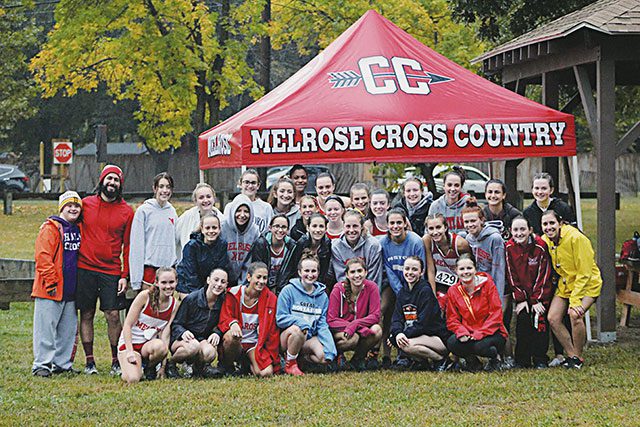
IT SHOULD be smooth sailing for cross country teams to compete next fall. They’ve been deemed a “low risk sport” by the National Federation of State High School Association. Pictured, league champ Melrose girl’s cross country. (file photo)
Moreover, the MIAA has established a COVID-19 task force to examine the potential impacts on the fall season and for the 2020-21 academic year. Its stated purpose is: “The COVID-19 Task Force will review all aspects of the fall 2020 season and the 2020-2021 school year related to the COVID-19 crisis, such as practice requirements, fan attendance, re-socialization efforts, protocol, procedures, transportation, etc.” The task force will begin to meet in late May and throughout the summer.
With more clarity still forthcoming from the MIAA, perhaps it’s best to look at the National Federation of State High School Associations (NFHS) who released a 16-page “Guidance for Opening Up High School Athletics and Activities” this month. (The entire document can be found on their website www.nfhs.org.) In one excerpt they state, “Until a cure, vaccine or very effective treatment is readily available, or so-called ‘herd immunity’ is confidently reached, social distancing and other preventive measures such as face-covering will be a ‘new normal’ if workouts, practices and contests are to continue.”
And in another, “In the absence of guidelines to the contrary, we recommend that cloth face coverings be worn by students during Phases 1 and 2. Exceptions are swimming, distance running or other high-intensity aerobic activity. Cloth face coverings may continue to be used during Phase 3 when not engaging in vigorous activity, such as sitting on the bench during contests, in the locker room and in the athletic training room.”
The phases that the NFHS spelled out are in accordance with guidelines published by the White House and CDC available at https://www.whitehouse.gov/openingamerica. The NFHS encourages athletes to adhere to local or state health departments’ individual plans for “opening up” and stress that not all states use the same criteria. But these guidelines should be considered a blueprint for individual states to work with.
The NFHS has spelled out some very specific guidelines and also designates fall sports by their “risk level.”
Here’s the skinny:
Phases of Social Distancing:
• Phase 1: Athlete and coach screening; no more than 10 people; no locker rooms; physical distancing; no using shared equipment; no water stations.
• Phase 2: No more than 10 people inside, 50 outside; locker rooms with social distancing; full practices for sports such as cross-country or swimming; modified practices for sports like volleyball or soccer.
• Phase 3: No more daily screenings; groups of 50 allowed; regular practices for most sports; modified practices for sports such as football. Allows spectators.
And which sports are considered safer than others? It’s worth stressing these are only recommendations and states are able to design their own plan. The NFHS designated them below:
“Higher Risk: Sports that involve close, sustained contact between participants, lack of significant protective barriers, and high probability that respiratory particles will be transmitted between participants.
Examples: Wrestling, football, boys lacrosse, competitive cheer, dance.
Moderate Risk: Sports that involve close, sustained contact, but with protective equipment in place that may reduce the likelihood of respiratory particle transmission between participants OR intermittent close contact OR group sports OR sports that use equipment that can’t be cleaned between participants.
Examples: Basketball, volleyball*, baseball*, softball*, soccer, water polo, gymnastics* (if the equipment can’t be sufficiently cleaned between competitors), ice hockey, field hockey, tennis*, swimming relays, pole vault*, high jump*, long jump*, girls lacrosse, crew with two or more rowers in shell, 7 on 7 football
*Could potentially be considered “Lower Risk” with appropriate cleaning of equipment and use of masks by participants.
Lower Risk: Sports that can be done with social distancing or individually with no sharing of equipment or the ability to clean the equipment between use by competitors.
Examples: Individual running events, throwing events (javelin, shot put, discus), individual swimming, golf, weightlifting, alpine skiing, sideline cheer, single sculling, cross country running (with staggered starts).”
So, it’s almost a given that if school convenes in the fall, sports such as golf, cross country and girls swim will be given the green light to compete. Sports such as volleyball are on the bubble but can be designated lower risk if they follow strict cleaning guidelines and use masks. For a sport to compete during Phase 2, picture only coaches, players, officials/referees, trainers and media allowed inside and strict outdoor social distancing crowd control.
For football, that seems impossible. Football, in fact, remains the biggest question looking at the fall sports landscape. For the Super Bowl Champion Melrose Red Raiders, the idea that they won’t return to Fred Green Field to a hero’s welcome on the first Friday night of September seems hard to fathom, but in these unprecedented times it’s worth wrapping your head around the idea of live stream games, and most certainly social distancing spectator rules. If those August football workouts look too optimistic, don’t rule out the MIAA fiddling with scheduling and pushing things back. They’ve already shown a commitment to thinking creatively in their attempt to salvage a spring sports season. And let’s face it. Football is a money maker statewide.
Talk about creative: the Ohio High School Athletic Association has proposed a potential flip to sports seasons. Sports played in the spring would be played in the fall and vice versa. In this model, their high school football season would be played in the spring of 2021, when a vaccine might be closer to developed. Golf, tennis, baseball, softball, track and field, lacrosse and field hockey could play in the fall. Football, soccer and volleyball would be played in the spring.
Other states, such as North Carolina, have already come up with their Guidance for Administrators and Participants of Youth, College & Amateur Sports Programs, released by the NC Dept. of Health and Human Services. The MA Department of Public Health has not released such guidelines specific to high school and youth sports but may over the summer.
Stay tuned.

